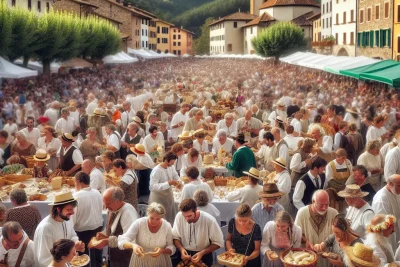
The Leaning Bell Tower of the Pyrenees: A Unique Tourist Attraction
The captivating stories of architectural wonders often include marvels that defy gravity. The Leaning Bell Tower of Nerellà nestled in the picturesque region of Bellver de la Cerdanya is no exception. This remarkable structure, often referred to as the "Catalan Pisa," draws attention with its charming Romanesque architecture and its distinct lean of approximately 1.25 meters. Whether you're an architecture enthusiast or a history buff, this bell tower offers a glimpse into the rich cultural tapestry and history of Catalonia.
A Historical Perspective
The Origins of the Church of Santa Eugènia
The Church of Santa Eugènia de Nerellà dates back to the 10th century and is recognized as a protected historical monument. Despite its age, the church remains largely intact, with the bell tower being a significant feature. Documented in the 839 consecration of the Cathedral of La Seu d'Urgell, the church acts as a crucial link to the region's past.
Engineering Quirks
The Leaning Tower
Similar to how the famed Pisa Tower became a universal symbol due to its inclination, the Leaning Bell Tower has carved its niche among quirky constructions that attract visitors. The inclination stems from the fact that it stands on unstable ground and has experienced earth movements over the years. Archaeological interventions have been made throughout its history, some as recent as 2001, aiming to stabilize the structure.
Features of the Structure
The tower stands at an impressive 19 meters tall and is square-shaped. Its architecture is typical of Romanesque style, characterized by its rounded arches and thick walls. Despite the tilt, the tower contains decorative features such as blind arches and exquisite stone carvings. The upper levels have windows that bathe its interior in natural light, showcasing the craftsmanship of its builders.
Visiting the Bell Tower
Accessibility and Local Attractions
Visiting the Leaning Bell Tower is not just about seeing an extraordinary structure; it allows visitors to explore the vibrant history of the surrounding area. The steps leading to the church are often lined with local artisan stalls, offering handmade goods reflective of the Catalan culture. Nearby, visitors can find charming restaurants serving traditional Catalan cuisine, making it easy to spend a full day exploring.
Past and Present
The church's lush surroundings enhance its charm. It is not only a piece of history but an active place of worship, bridging the past with the present. Events like annual festivals attract locals as well as tourists, making it a lively part of the community.
The Cultural Significance
A Symbol of Resilience
The Leaning Bell Tower stands as a testament to resilience, a reminder that structures can endure the test of time—even against the forces of nature. It emphasizes the historical endeavors to preserve heritage, showcasing how communities unite to protect their cultural landmarks. This building is not merely about its tilt but about the stories woven into its existence.
Final Thoughts and Recommendations
If you find yourself in the midst of the Pyrenees, take the time to visit the Leaning Bell Tower of Nerellà. This unique structure is bound to not only resonate with your sense of adventure but also provide insights into the Catalan rich history. As you stand before this architectural anomaly, you will appreciate not only the craftsmanship but also the resilience of the community that has preserved it for generations to come.
If you want to know other articles similar to Embrace the Tilt: Discovering the Leaning Bell Tower of Nerellà you can visit the Daily News category.




